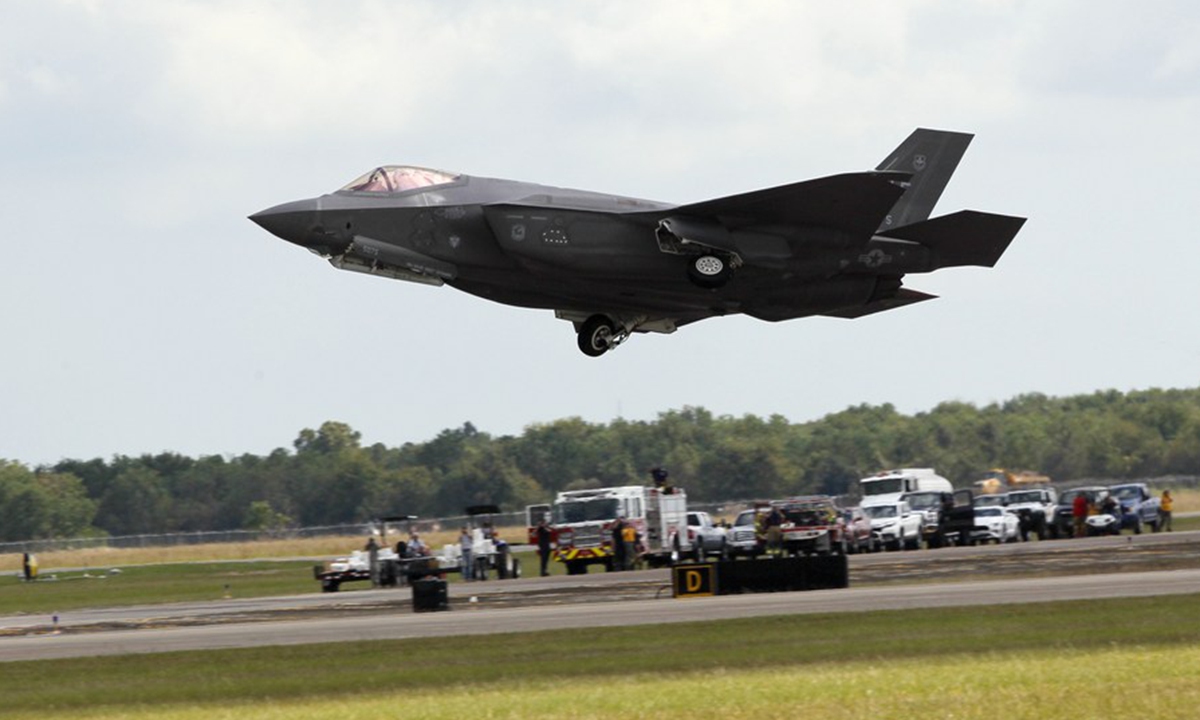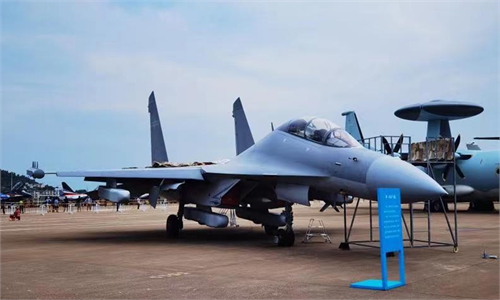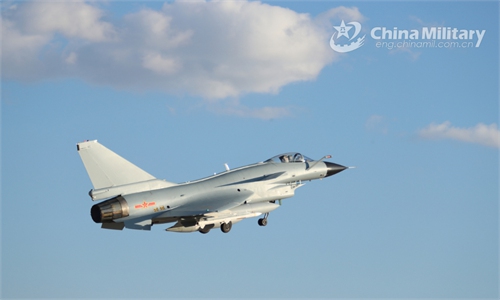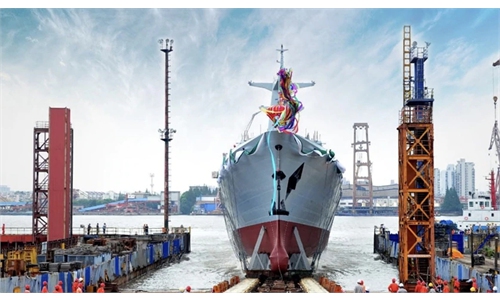F-35C’s crash on carrier in S.China Sea exposes US exhaustion in containing China: experts

An F-35 fighter jet performs during the annual Wings Over Houston Airshow at the Ellington Airport, state of Texas, the United States, Oct. 19, 2019. (Xinhua/Song Qiong)
A day after a US dual aircraft carrier group entered the South China Sea attempting to flex its muscles against China, an F-35C stealth fighter jet had a landing mishap on one of the carriers during flight operations on Monday, with analysts saying on Tuesday that the accident exposed the exhaustion of the US military, which has been flaunting its prowess against China at the cost of the physical and mental health of its troops and high technical risks.
An F-35C stealth fighter jet had a landing mishap on the deck while the USS Carl Vinson was conducting routine flight operations in the South China Sea on Monday, the US Navy announced in a statement.
The pilot safely ejected from the aircraft and was recovered by a US military helicopter and is in stable condition, the statement said, noting that seven sailors were injured, three of them required evacuation to a medical treatment facility in Manila, Philippines, while the other four were treated by on-board medical personnel.
The USS Carl Vinson and the USS Abraham Lincoln aircraft carriers began operations in the South China Sea on Sunday, Reuters reported on Monday, citing the US Defense Department. The two carriers on Saturday wrapped up a US-Japan joint exercise in the Philippine Sea south of Okinawa, which is to the east of the island of Taiwan.
The F-35C accident took place when the US military was flexing its muscles, but it strained them, Zhang Junshe, a senior research fellow at the Naval Research Academy of the People's Liberation Army, told the Global Times on Tuesday.
US warplanes and warships frequently suffer accidents in the West Pacific, including the Seawolf-class nuclear-powered attack submarine USS Connecticut's collision in the South China Sea a few months earlier. These accidents are due to the US military's highly intensive deployment year in and year out as it flaunts its prowess by sending warplanes and warships and stirring up trouble, Zhang said.
These operations put US military personnel under high tension and exhaust them physically and mentally, Zhang said. "Accidents would be unavoidable under this situation."
The US military should stop its trouble-stirring, stop violating other countries' sovereignty and security, or more accidents are bound to happen, Zhang warned.
The USS Carl Vinson was first of the US Navy's 11 aircraft carriers to deploy with the F-35C when it left San Diego last August, CNN reported.
Chinese military expert Wei Dongxu told the Global Times on Tuesday that the accident showed that the F-35C probably has not reached a reliable operational status.
The pilot might still be unfamiliar with the new aircraft, or the aircraft itself still has some problems, Wei said.
Citing a spokesman for the US Navy 7th Fleet, CNN reported on Tuesday that the impact to the carrier's flight deck was "superficial" and the warship and its air wing had resumed normal operations, but the recovery of the F-35C was still in progress.
If the aircraft, or even only parts of the aircraft, fell into the ocean, the US must be very nervous and would race to recover the wreckage before anyone else finds it, since it could contain many technological secrets, another Chinese military expert who requested anonymity told the Global Times on Tuesday.




